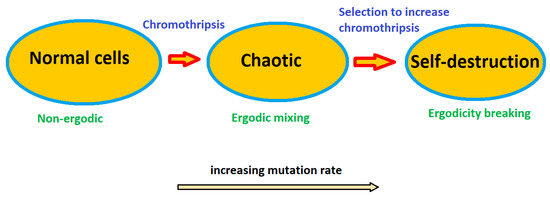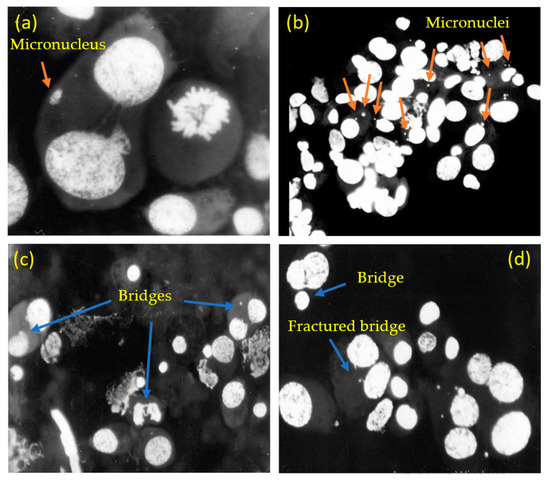Shityakov, S.; Kravtsov, V.; Skorb, E.V.; Nosonovsky, M.
Ergodicity Breaking and Self-Destruction of Cancer Cells by Induced Genome Chaos. Entropy 2024, 26, 37. https://doi.org/10.3390/e26010037
During the progression of cancer cells, the degree of genome instability increases leading to genome chaos in populations of malignant cells. While normally chaos is associated with ergodicity, i.e., the state when the time averages of relevant parameters is equal to their phase space averages, the situation with cancer propagation is more complex. Chromothripsis, a catastrophic massive genomic rearrangement, is observed in many types of cancer leading to increased mu-tation rates. We present an entropic model of genome chaos and ergodicity and experimental evidence that increasing the degree of chaos beyond the non-ergodic threshold may lead to the self-destruction of the tumor cells. We study time and population averages of chromothripsis frequency in cloned rhabdomyosarcoma from rat stem cells. Clones with frequency above 10% result in cell apoptosis possibly due to mutations in the BCL2 gene. Potentially this can be used for suppressing cancer cells by shifting them into a non-ergodic proliferation regime.

Chromothripsis marks the transition to ergodic behavior, while further increasing the mutation rate results in the apoptosis of malicious cells. Note that increasing the degree of chaos beyond the non-ergodic threshold may also lead to the emergence of clones that are resistant to the treatment methods.

Bridges and micronuclei in transplantable rhabdomyosarcoma cells of rats. (a) A micronucleus at magnification ×1000. (b) Numerous cells with micronuclei (some marked with orange arrows) at magnification ×200. (c) Cells with bridges (blue arrows) at magnification ×200 and (d) ×400.